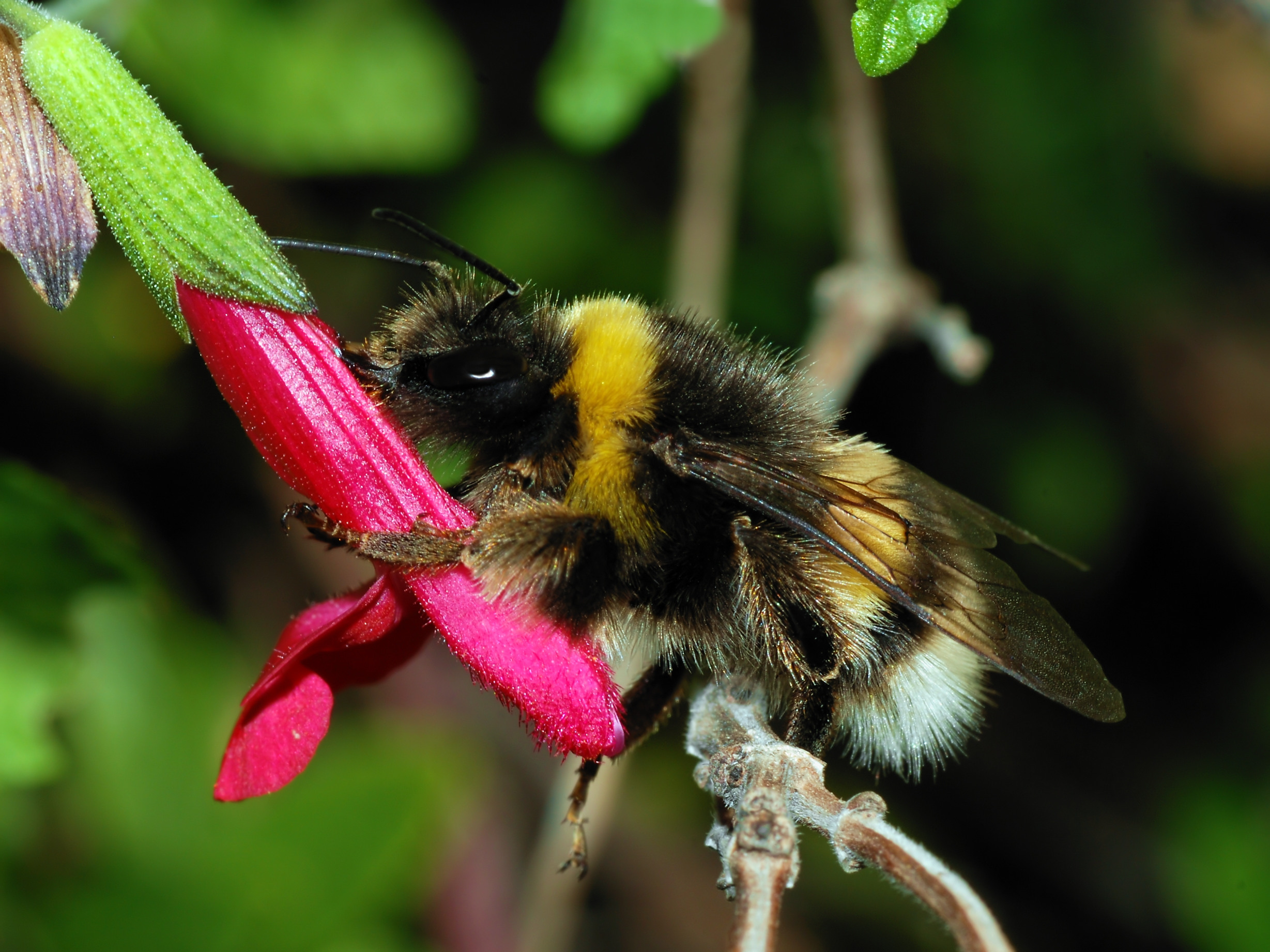Photo by Alvesgaspar licensed under CC BY-SA 3.0
Worldwide, pollinators are having a rough go of it. Humans have altered the landscape to such a degree that many species simply can't keep up. The proverbial poster child for pollinator issues is the honeybee (Apis mellifera). As a result, countless native pollinators get the short shrift when it comes to media attention. This isn't good because outside of intense industrial agriculture, native pollinators make up the bulk of pollination services. Similarly, honeybee fandom often overshadows any potential negative effects these introduced insects might be having on native pollinators.
Long term scientific investigations are starting to paint a more nuanced picture of the impact introduced honeybees are having on native ecosystems. For instance, research based out of California is finding that honeybees are playing a big role in the decline of native bumblebee populations. What's more, these negative impacts are only made worse in the light of climate change.
Licensed under public domain
For over 15 years, ecologist Dr. Diane Thompson has been studying bumblebee populations in central California. At no point during those early years did any of the bumblebee species she focuses on show signs of decline. In fact, they were quite common. Then, around the year 2000, feral honeybees started to establish themselves in the area. Honeybee colonies were becoming more and more numerous each and every year and that is when she started noticing changes in bumblebee behavior and numbers.
You see, honeybees are extremely successful foragers. They are generalists, which means they can visit a wide variety of flower types. As a result, they are extremely good at competing for floral resources compared to native bumblebees. Her results show that increases in the number of honeybee colonies caused not only a reduction in foraging among the native bumblebees, they also caused a reduction in bumblebee colony success. The native bumblebees simply weren't raising as many young as they were before honeybees entered the system.
Decreased rainfall cause a decline in flower densities of Scrophularia californica, a key resource for native bumblebees in this system. Photo by USFWS - Pacific Region licensed under CC BY-NC 2.0
Climate change is only making things worse. As drought years become not only more severe but also more intense, the amount of flowers available during the growing season also declines. With fewer flowers on the landscape, bumblebees and honeybees are forced into closer proximity for foraging and the clear winner in most foraging disputes are the tenacious honeybees. As such, bumblebees are chased off the already diminishing floral displays. By 2014, Dr. Thompson had quantified a significant decline in native bumblebee populations as a result.
It would be all too convenient to say that this research represents an isolated case. It does not. More and more research is finding that honeybees frequently out-compete native pollinators for resources such as food and nesting sites. Such effects are especially pronounced in rapidly changing ecosystems. Although honeybees are here to stay, it is important that we realize the impacts that these feral insects are having on our native ecosystems and begin to better appreciate and facilitate the services provided by our native pollinators.


